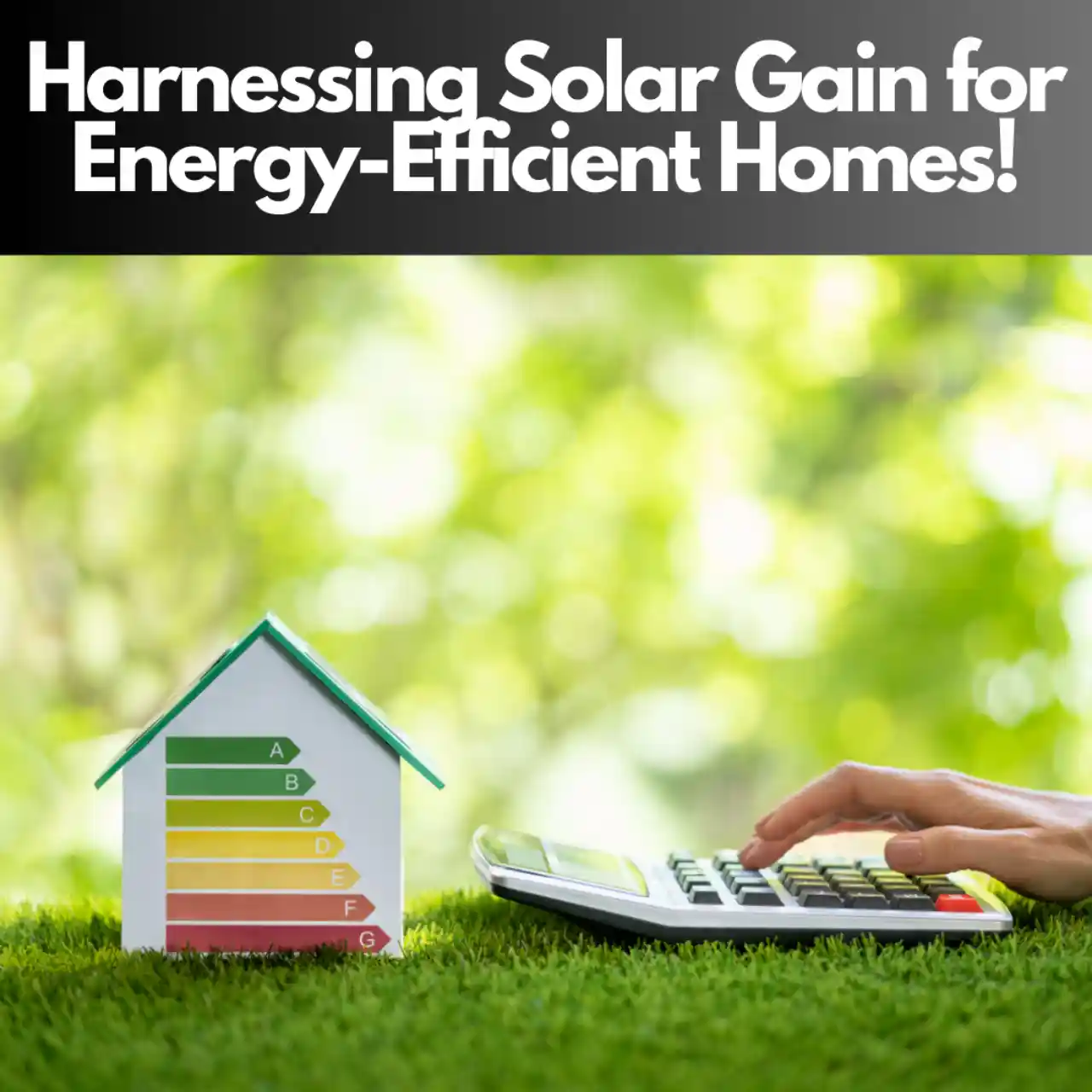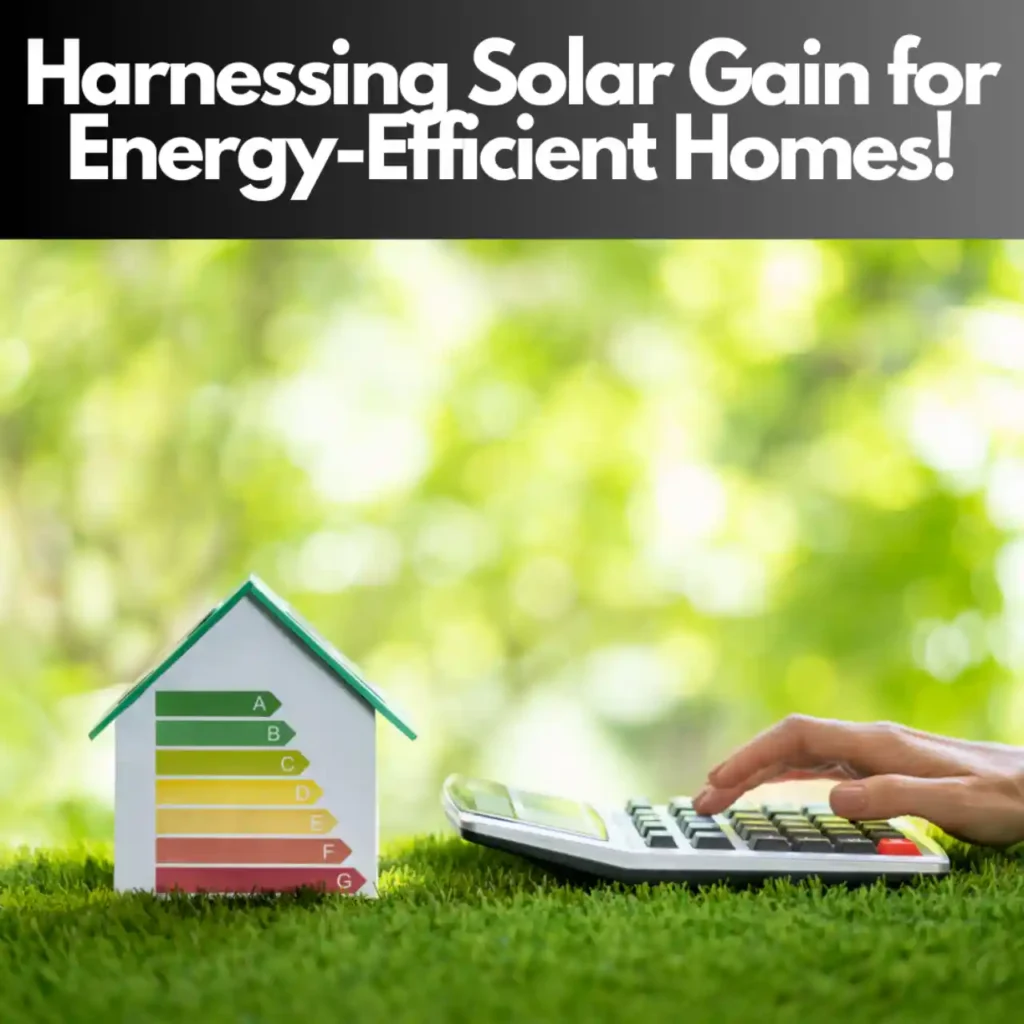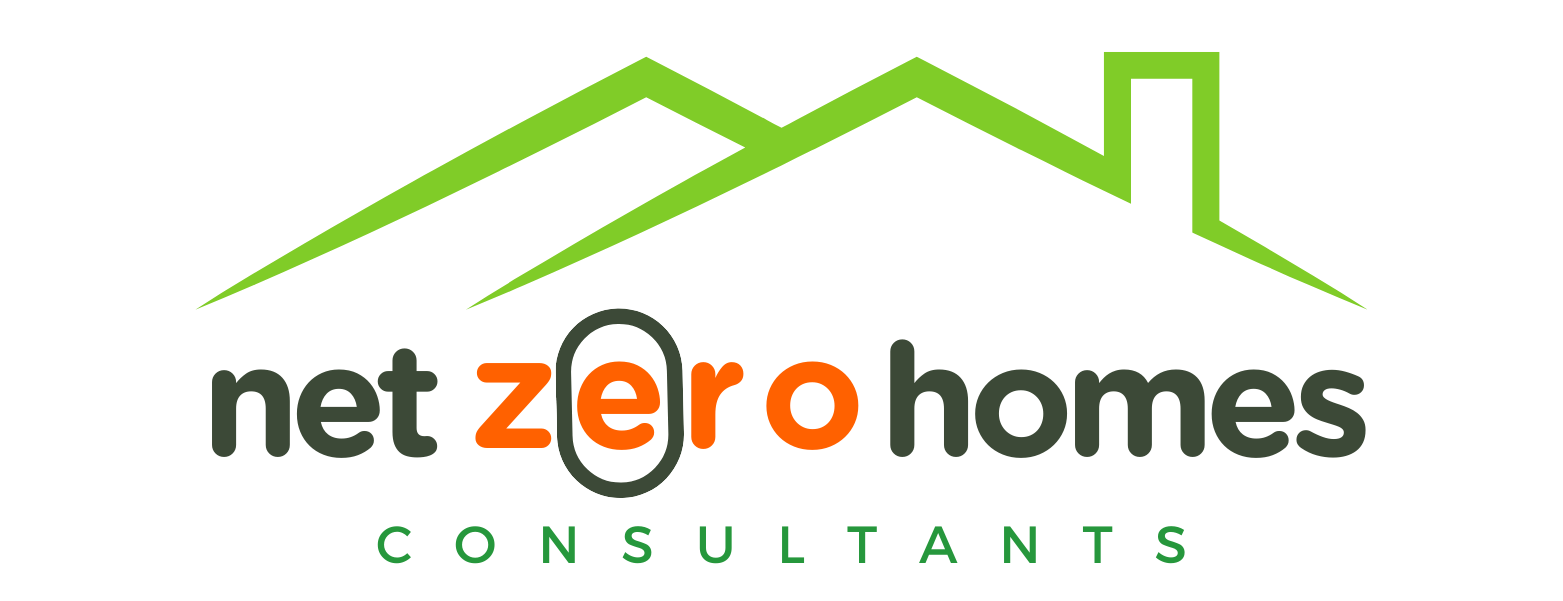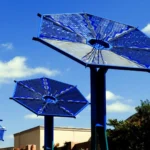Virtual appointments for canadians ONLY!
Harnessing Solar Gain for Energy-Efficient Homes!


As the movement toward sustainability gains traction, more homeowners are exploring ways to make their homes more energy-efficient and environmentally friendly. Solar gain—the natural energy from the sun—offers a powerful, renewable source of heat and light that can be harnessed to reduce energy needs.
When combined with technologies like solar panels, well-designed solar gain strategies are integral to achieving net-zero homes, which produce as much energy as they consume.
Programs such as Canada Greener Homes make it easier than ever for Canadians to incorporate solar energy and efficiency upgrades into their homes, creating an exciting opportunity for cost savings and sustainability. Here’s a guide to understanding solar gain and its role in energy-efficient, net-zero homes.
What is Solar Gain?
Solar gain is the process by which sunlight enters a home and is converted to heat, naturally warming the space. Homes that are designed to maximize solar gain can rely less on artificial heating, especially during colder months, which is particularly valuable in colder climates such as Canada’s. Solar gain can be harnessed in two primary ways:
- Passive Solar Gain: Involves designing the home to capture sunlight directly, using windows, floors, and walls to absorb and radiate heat.
- Active Solar Gain: Uses solar technologies, such as solar panels, to capture sunlight and convert it into electricity or hot water for home use.
Both passive and active solar strategies are essential components of net-zero homes, as they help minimize reliance on the electrical grid, reduce energy costs, and lower greenhouse gas emissions.
How Solar Gain Improves Home Energy Efficiency ?
By incorporating solar gain effectively, homes can achieve a range of energy-saving benefits that support sustainability goals, lower bills, and improve indoor comfort. Here are some of the primary advantages:
- Reduced Heating Costs: Homes that capture solar gain require less artificial heating, reducing energy expenses significantly, particularly in colder regions like Canada.
- Increased Home Comfort: Solar gain warms living spaces naturally, providing a more balanced and comfortable indoor environment.
- Enhanced Home Value: Energy-efficient features, including solar technologies, increase home resale value and appeal to eco-conscious buyers.
- Lower Carbon Footprint: Using solar energy means fewer greenhouse gas emissions, helping homeowners contribute to Canada’s climate goals and make strides toward net-zero living.
Designing Homes for Maximum Solar Gain
Integrating solar gain requires thoughtful design to ensure homes receive maximum sunlight and retain heat effectively. Here are some design strategies that help homes make the most of solar gain:
1. Home Orientation and Window Placement

- South-Facing Orientation: In the Northern Hemisphere, orienting a home’s main living spaces toward the south allows them to receive the most sunlight throughout the day.
- Window Design: Placing large, energy-efficient windows on south-facing walls captures sunlight directly, while minimizing windows on the north side helps prevent heat loss.
- High-Performance Windows: Double- or triple-glazed windows with low-emissivity (Low-E) coatings help retain heat in winter while controlling solar gain in summer, making them a valuable addition to any net-zero home.
2. Using Solar Panels for Active Solar Gain
- Solar Panels for Electricity: Installing solar photovoltaic (PV) panels converts sunlight into electricity, directly reducing reliance on the grid and lowering electricity costs.
- Solar Thermal Systems: Solar water heating systems use solar gain to heat water for domestic use, which is particularly effective for achieving net-zero energy goals.
- Battery Storage: Pairing solar panels with battery storage systems helps capture and use solar energy even on cloudy days or at night, enhancing energy independence.
3. Thermal Mass for Heat Retention
- Thermal Mass Materials: Using materials like concrete, stone, or brick in walls and floors absorbs and stores solar heat during the day, then radiates it at night, keeping temperatures consistent.
- Flooring Choices: South-facing rooms benefit from flooring materials with high thermal mass, such as tile or stone, to capture and release heat gradually, contributing to a comfortable, energy-efficient home.
4. Shading and Insulation
- Roof Overhangs and Shading: Overhangs or awnings on south-facing windows provide shade in summer, preventing overheating and ensuring comfortable temperatures year-round.
- Deciduous Trees: Planting deciduous trees provides natural shade in the summer, while allowing sunlight through bare branches in the winter to enhance solar gain.
- Effective Insulation: Insulating walls, floors, and attics reduces heat loss, making solar gain more effective by keeping warmth inside the home.
Solar Gain and Canada Greener Homes Program
For Canadian homeowners looking to improve energy efficiency, the Canada Greener Homes Initiative provides grants and loans for various upgrades, including solar panels, energy-efficient windows, and insulation improvements. By offering financial support, this program empowers homeowners to incorporate solar gain strategies and other energy-efficient technologies into their homes.
Under the Canada Greener Homes Initiative, eligible homeowners can receive grants for home evaluations, which help identify how solar gain can be optimized in their home’s design and pinpoint specific upgrades that would improve energy efficiency.
Overcoming Potential Challenges with Solar Gain
While solar gain has many benefits, there are certain considerations to address to maximize its effectiveness:
- Overheating in Summer: Homes designed for solar gain must have adequate shading and ventilation to prevent overheating during warmer months.
- Climate Limitations: Solar gain is most effective in areas with abundant sunlight. For regions with frequent cloud cover, active solar options, such as solar panels with battery storage, can help.
- Initial Costs: While passive solar gain is cost-effective, installing solar panels and high-performance windows may require an initial investment. Programs like Canada Greener Homes help offset these costs.
Embracing Solar Gain for a Net-Zero Future
Solar gain is a vital component of energy-efficient and net-zero home design. By strategically capturing and using natural sunlight, homeowners can reduce their energy consumption, lower carbon emissions, and enjoy a more comfortable living environment. Combining passive and active solar gain strategies—like solar panels, efficient windows, and effective insulation—empowers homes to generate, retain, and use renewable energy effectively.
For homeowners in Canada and beyond, solar gain provides a sustainable pathway toward energy efficiency, resilience, and environmental stewardship. By embracing solar gain, we’re taking important steps toward a cleaner, greener future, one home at a time.








[…] Natural Resources with Solar […]
[…] 1. Optimize Your Heating System […]
[…] Longer System Life: Reduced on-and-off cycling decreases wear and tear on critical components like fans and compressors. Operating at lower capacity is easier on the system, promoting durability and longevity. […]